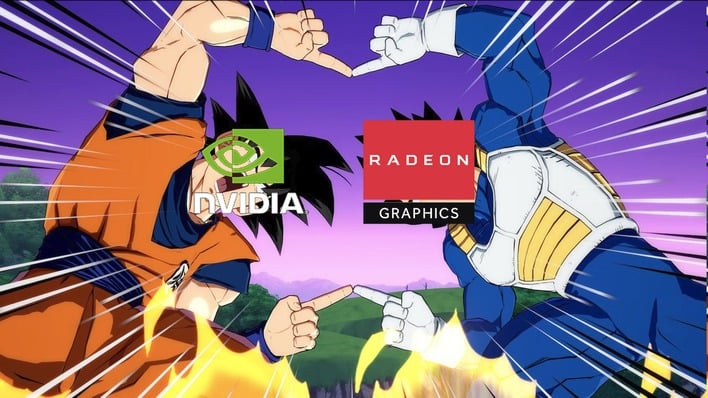NVIDIA And AMD Frame Gen Tech Combine For Big Results In Game Benchmarks

AMD's FidelityFX Super Resolution is available for use on any graphics card, and that includes FSR 3 frame generation. However, you can't use FSR 3 at the same time as DLSS. Or can you? In AMD's beta graphics drivers, you can enable a function called Fluid Motion Frames that essentially applies frame generation to almost any game. How do you use DLSS on a Radeon, though? Well, you don't, exactly.
The trick, as discovered by Korean hardware site Quasar Zone, is to install both a GeForce card and a Radeon card in the same system, and then hook up your monitor to the Radeon card. Then, you use Windows' graphics options to force games to run on the GeForce card, enable DLSS Frame Generation, and also enable Fluid Motion Frames in the Radeon software. Voila: you're now doubling up on frame generation.

But does it actually work? Apparently so. Testing using a GeForce RTX 4090 and a Radeon RX 6600, Quasar Zone was able to record a performance increase of 191.9%—nearly triple the framerate—over pure native rendering without any frame generation, and basically double the frames compared to using DLSS 3 FG alone. Those results were in Cyberpunk 2077; gains in other games were typically more modest.
Another interesting use case was in Starfield, which didn't support DLSS frame generation until very recently. However, thanks to a recent update, you can use DLSS upscaling as well as AMD's Fluid Motion Frames. This took the game from 72.8 average FPS all the way up to 200.2 average FPS—almost assuredly a better gaming experience, even if AFMF probably increases the input lag a bit; sadly, the site didn't test input latency in this configuration.

There are other drawbacks to this wacky idea, too. AMD's Fluid Motion Frames feature dynamically disables itself during rapid camera motion to prevent severe motion artifacts, and Quasar Zone says that "this drawback applies fully." In other words, you can see huge fluctuations in the frame rate, which can still be jarring even when you're skipping between 125 and 250 FPS.

It's possible that part of the reason that AFMF is so effective at increasing the frame rate is because the Radeon RX 6600 is essentially idle aside from doing AFMF. However, you'll want a reasonably powerful Radeon card to do this; Quasar Zone noted around 90% GPU utilization doing AFMF on a 4K output. The site also tested doing this with a Radeon RX 6500 XT and it was much less effective.
There's a popular saying in the US: if it's stupid and it works, it's not stupid. In this case, though, we can't say we recommend doing this, and neither does Quasar Zone. Despite that the site reports high frame rates when using a GeForce and Radeon card in concert, they also say that there are a lot of reasons you wouldn't want to try this at home, including the requirement of having a second GPU in your case, the necessity of running your games in exclusive fullscreen mode, and the pain of dealing with the various errors, crashes, and other problems that will inevitably occur.
It's still a fun experiment, though, and we recommend heading over to Quasar Zone if you're looking for more information. It's in Korean, but Google Translate does a fine job with it, if you don't speak the language.


